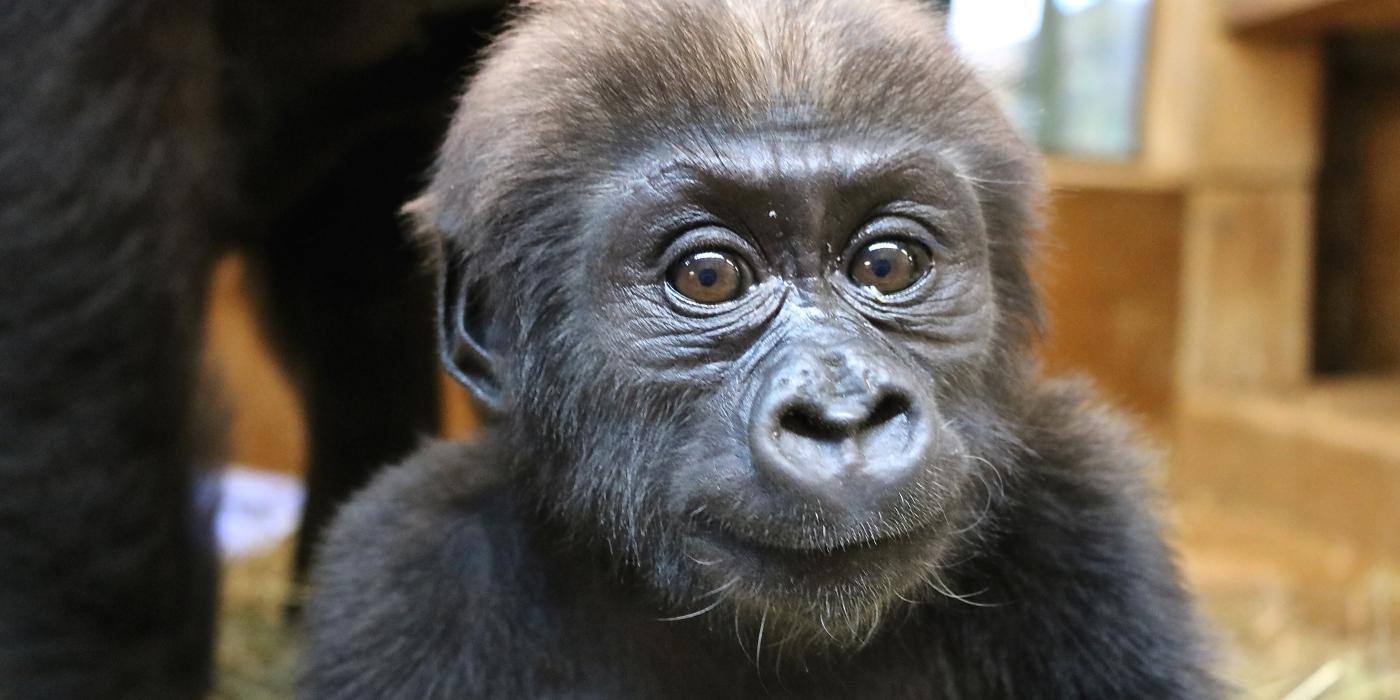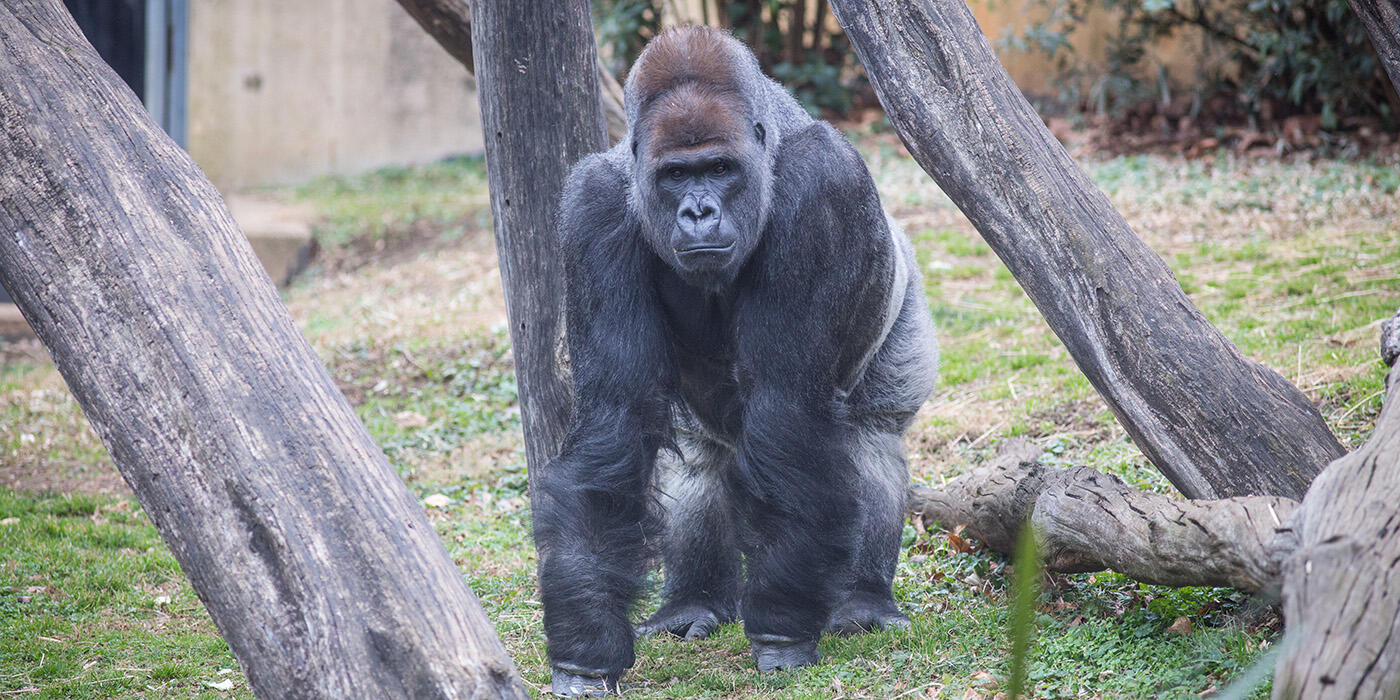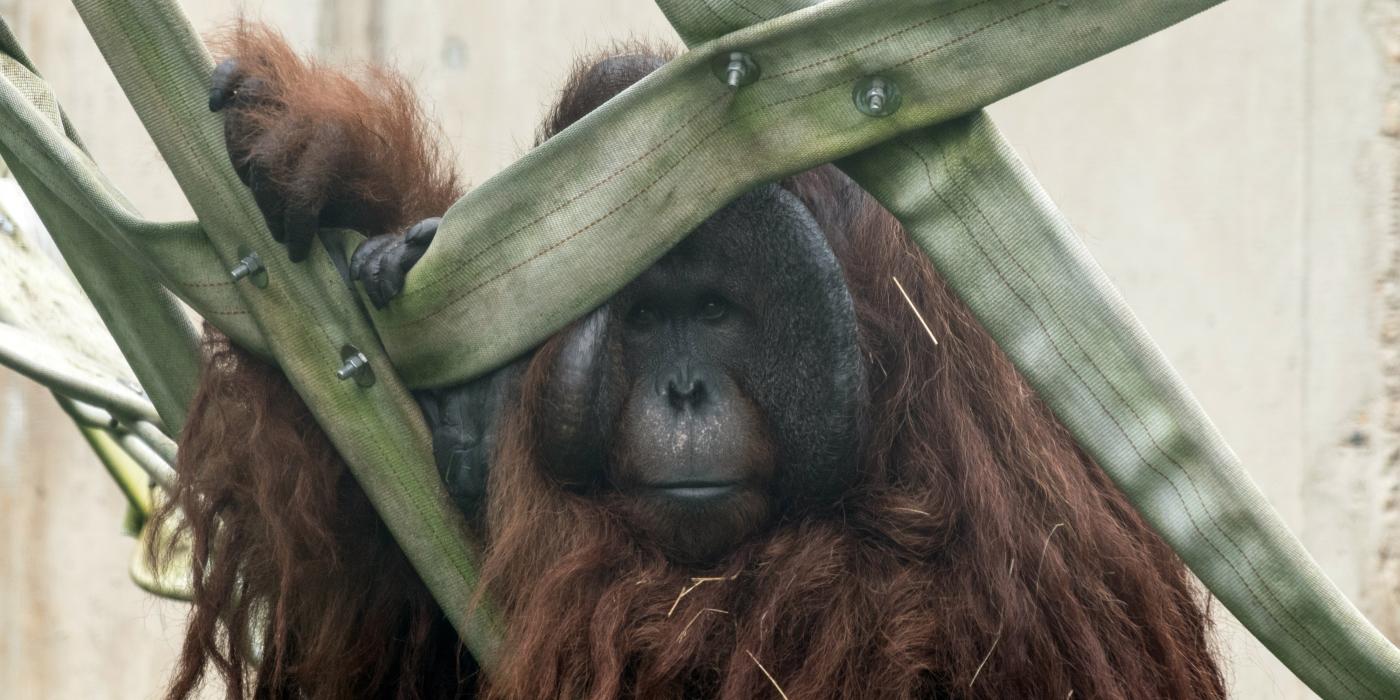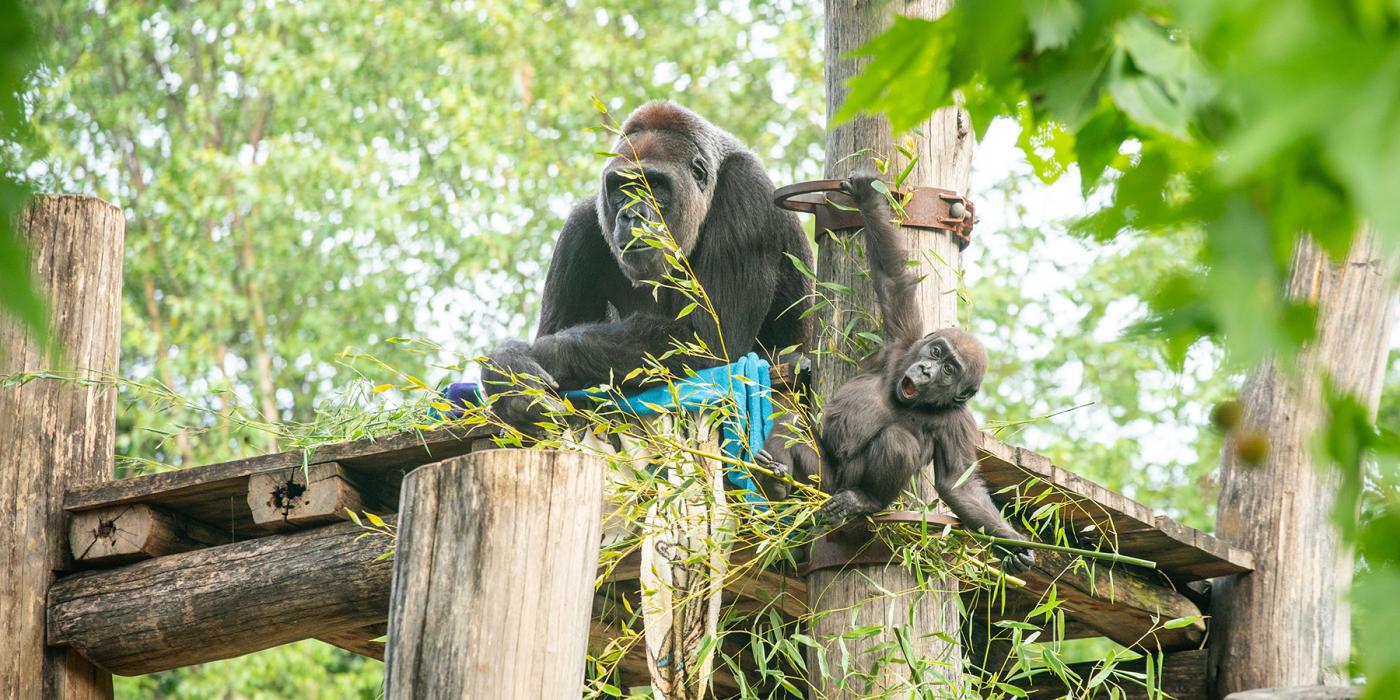#GorillaStory: Who Knows This Nose?
This update was written by primate keeper Melba Brown.
At 4 months old, our western lowland gorilla infant Moke is already solid on his footing and has started giving his mom, Calaya, some good exercise in chasing after him! The mobility practice sessions he had under her watchful eye appear to have made a noticeable difference in the speed of his movements.




